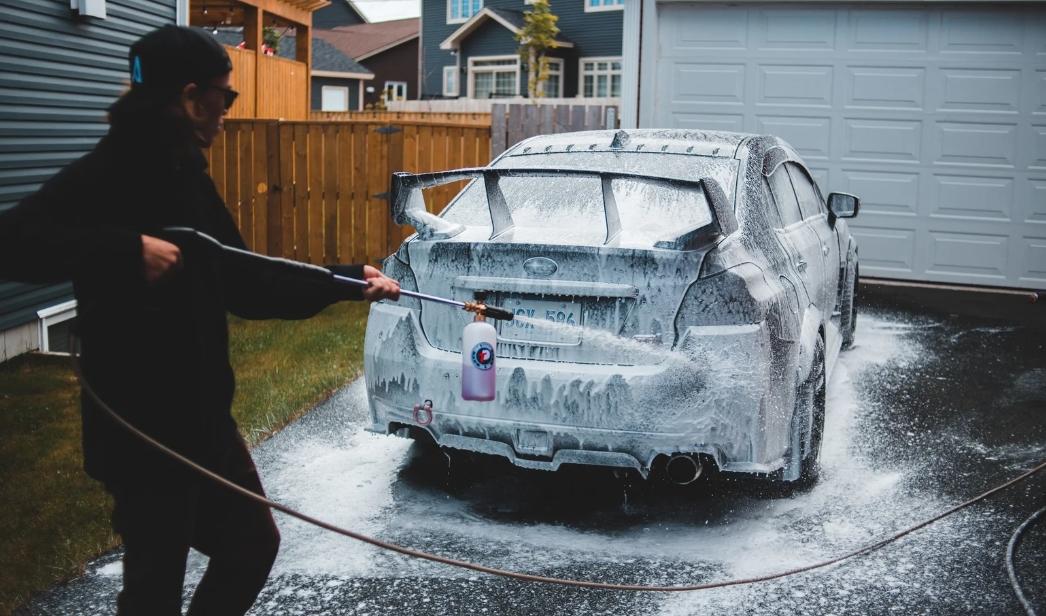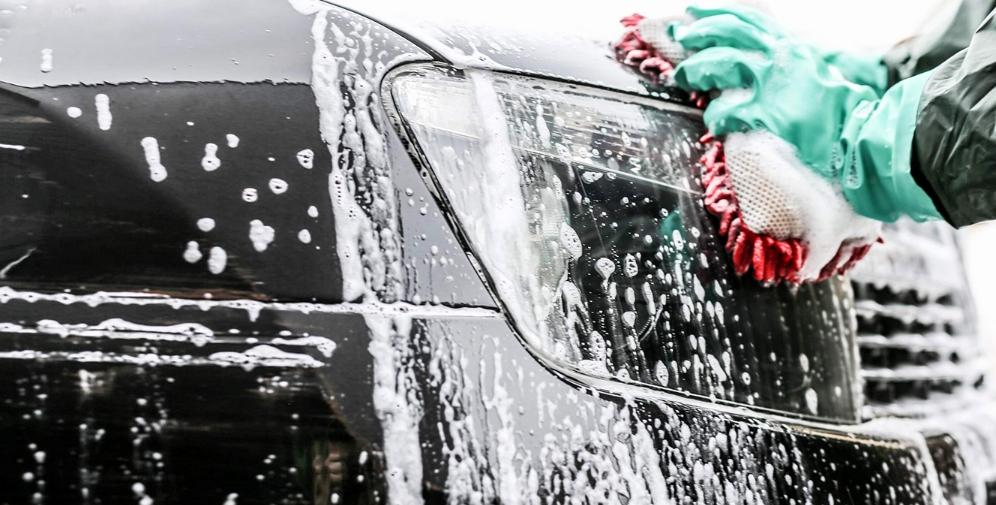When taking a dirty car to a car wash, we’re almost always confident of a relatively successful result, but it’s best to monitor the process, otherwise there could be unpleasant consequences for the bodywork and on-board electronics. So what should you look out for?
Washing heavily soiled vehicles
Firstly, try to get your car washed at least once a week. The notion that a layer of dirt protects the paintwork from sand, salt and abrasive particles is actually a myth. The more dirt adheres to your car, the more difficult it will be to remove without affecting the paintwork.
We’re not even talking about the effects of wearing a road reagent ‘suit’ on your bodywork. If you’ve been driving on asphalt covered in chemical sludge, welcome to the car wash! Definitely, if your car is thoroughly polluted, avoid automatic car washes. Contact with brushes, especially for strongly soiled car, is destructive. At usual car washes, ask car wash operators to wash your car thoroughly before foam application. Sometimes it’s logical to pay extra for this procedure.
Not accounted for by temperature differences
Direct sunlight is a known enemy of paintwork. However, it’s not even the warming up of the bodywork itself, e.g. in the blazing southern sun, but the sudden change in temperature when streams of cold water are poured over the almost literal red-hot bodywork. You may not notice the effects of such hardening immediately, they will manifest themselves later. Temperature changes cause imperceptible micro cracks to develop in the lacquer. Over time, these will allow moisture to seep through and cause corrosion.
To protect your bodywork from such unpleasant scenarios, splurge on an extra polish before the summer season. To prevent your car’s windows from cracking, use the air conditioning system to gradually cool the interior down just before washing in the heat. Alternatively, make sure that the car washers use lukewarm rather than cold water when washing the car. Similar precautions should be taken when washing very cold cars, e.g. cars that were outside in sub-zero temperatures during the winter.
However, good carwashes know: to spare a body and glasses of automobile, it should stand and get warm before washing for at least five, and better all for ten minutes. Even then, the car should be rinsed first with cold water and then the temperature should be increased as necessary.
Drying – not drying
Another common mistake that occurs in winter is the incomplete drying of numerous bodywork elements. What’s the first thing to look out for? It’s not uncommon for car wash operators to limit themselves to blowing out the locks with compressed air. But you should also make sure they rub the door seals dry (and not symbolically), and just as importantly, the fuel filler flap. Otherwise you risk either not getting into the car in freezing temperatures or being unable to unscrew the frozen petrol tank cap at the petrol station.
Also make sure the exterior mirror elements are blown out and the parking sensors are wiped down. Another tip is to “frost” the car after washing: open everything that opens, move the wiper blades away from the windscreen and let the car stand like that for about five minutes.
“Work on the door locks, bonnet, boot lid and fuel filler flap to make sure the gears and actuators are not frozen. If you park the car right after washing, take the time to “dry” the brake shoes by performing series of acceleration and braking. Once you have done this, the chances of the pads sticking to the discs or drums will be reduced to a minimum.
Careful of the underbody space
The desire to see a clean underhood is understandable and even commendable. However, if you entrust this area to professionals or take it to a self-service car wash, make sure you know if a high-pressure washer is used. Modern machines are packed with gauges and electronics.
Also, high pressure water can easily get into the holes in control units. Ruptured wiring, damaged radiators or even chipped paint are just a few of the hazards that can be caused by the improper use of washing machines.
Close contact with water
Watch the cleaners and in most cases you will see that they bring the “nozzle” of the “kerger” too close to the body. It’s understandable – it’s more effective at knocking down dirt, especially around the arches.
In the meantime, water flow pressure can reach 140 bar, which is a serious test for the paintwork. The surface protection layer vibrates and the paint becomes micro-cracked, which can become cloudy after a few years.
If your car is not new and the body is rusted, the blast from a “kerger” is doubly dangerous – it can chop off pieces of metal that it needs. Also, if handled carelessly, the washerman, or more likely you yourself, can damage the decorative plastic linings. In any case, it is advisable to hold the gun at least 25 cm away from the bodywork and not to wash off dirt at an angle of 90 degrees.


